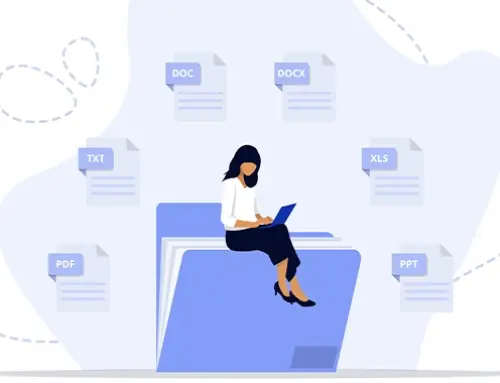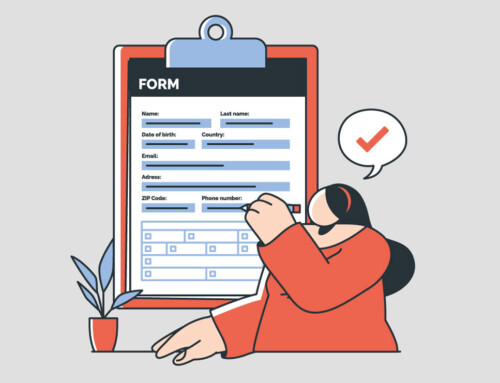Contents
How to Build a Winning Demand Package for Personal Injury Claims
In personal injury cases, the demand package plays a crucial role in setting the stage for negotiations and reaching a settlement. It is more than just a list of claims—it is your opportunity to clearly present the facts, back them up with solid evidence, and explain why your client deserves compensation. A well-structured demand package for settlement can often expedite negotiations, helping both parties avoid the lengthy litigation process. Here is a simple guide to help you create a winning demand package that can strengthen your personal injury claim and improve your chances of securing a fair settlement.
Gather Comprehensive Medical Records
The cornerstone of any personal injury claim is thorough medical documentation, which serves as vital evidence to prove the extent of the injuries sustained. These records should include emergency room reports, as evaluations conducted immediately after the injury are crucial in establishing the initial severity of the harm. Additionally, doctor’s notes and test results are essential, offering professional insights into the diagnosis and outlining treatment plans. It is also necessary to keep all medical bills and receipts for treatment expenses, such as hospital stays, surgeries, medications, and therapy.
To strengthen your claim, it is advisable to organize your medical records chronologically, ensuring a clear timeline of the treatment process. Highlight critical information that directly links your injuries to the incident, making it easier to demonstrate the connection between the accident and your medical condition.
Include a Detailed Description of the Incident
An essential part of a demand package is the description of the accident or incident that caused the injury. Ensure you provide a detailed narrative of the events leading up to, during, and after the incident. It is important to include police reports or accident reports, witness statements, and any other supporting documentation that can substantiate your account.
In addition, use photographs or video evidence to solidify your claim further. Visuals of the accident scene, injuries, or property damage can be powerful tools in making your case.
Lastly, it is crucial to maintain objectivity and refrain from using emotional language. By sticking to the facts, you can ensure that your narrative remains credible and professional.
Document Economic Damages
To maximize compensation for your injury, thoroughly itemize all financial losses, commonly called economic damages. These losses typically fall into several categories, starting with lost wages. If your injury caused you to miss work, you could calculate this loss by providing pay stubs or tax records as proof of the income you could not earn during your recovery.
Next, consider future lost earnings, especially if your injury has long-term effects that could impact your ability to work. In such cases, expert testimony or medical documentation can help demonstrate how your earning potential has been affected, providing crucial support for this claim. Additionally, it would help if you accounted for out-of-pocket expenses, including transportation to medical appointments, necessary home modifications, or additional caregiving services.
To ensure these financial claims are credible and accurate, back each one with solid documentation, such as receipts, invoices, and employment records. This will help provide a clear, comprehensive picture of the economic impact of your injury, instilling confidence in the strength of your case for full compensation.

Account for Non-Economic Damages
Non-economic damages refer to intangible losses such as pain and suffering, emotional distress, and the loss of enjoyment of life. These damages can be more challenging to quantify, but a well-prepared demand package can make a significant difference. A strong demand package will include first-hand accounts from the injured party, family members, or close friends detailing how the injury has impacted the individual’s day-to-day life. Moreover, statements from mental health professionals should be included if therapy or counseling is necessary due to emotional trauma.
Although there may be a temptation to exaggerate the emotional impact, it is crucial to stick to the facts and remain truthful. This approach not only adds credibility to the claim but also provides a clear and honest representation of the impact, making it more likely to be taken seriously.
Create a Comprehensive Settlement Demand Letter
The settlement demand letter is a critical component of the compensation process, as it formally requests payment from the responsible party’s insurance company. This letter should provide a clear and concise summary of the incident, outlining the injuries sustained and the treatment received. In addition, it should present a detailed account of both economic and non-economic damages to justify the compensation being sought. A specific monetary figure must be included and carefully calculated based on the total damages. A fair personal injury claim settlement can often be reached through skilled negotiation, avoiding the need for a lengthy court case.
Ensuring that the amount requested is reasonable is essential, as an excessively high demand can hinder negotiations. Collaborating with your attorney is vital in determining a fair and realistic figure that strengthens your case and encourages constructive negotiation with the insurance company.
Anticipate Defenses and Address Potential Weaknesses
Insurance companies are highly skilled at finding ways to minimize claims. To create a strong demand package, it is important to address potential weaknesses the insurance company might exploit proactively. One crucial step is to acknowledge any pre-existing conditions while differentiating them from the injuries caused by the incident. This helps to avoid any confusion or attempts by the insurer to downplay the extent of the new injuries.
Another critical strategy is to refute any claims of comparative negligence by providing solid evidence that the injured party was not at fault. This could involve witness statements, photos, or other documentation that strengthens your case. Working closely with your legal team to identify these areas of concern and gather the necessary evidence to counter them effectively is essential.
Present a Timeline of Events
Including a detailed timeline in your demand package not only organizes the events but also strengthens the overall narrative of your claim. Start with the date of the injury, highlighting critical moments such as medical appointments, surgeries, follow-up treatments, and any physical therapy sessions. Document any changes in your work status, such as days missed due to pain or disability, and note significant milestones in your recovery or setbacks that have occurred. This chronological structure makes it easier for insurance adjusters or opposing parties to see the lasting impact of the injury on your daily life and your ability to work, further supporting the need for adequate compensation.
Follow Up Professionally
Follow-up is crucial to keep your claim moving forward, but it is essential to balance persistence and professionalism. Set a reminder to check in with the insurance company or opposing counsel within a reasonable time frame, such as one to two weeks after submitting the demand package. In your communications, be polite yet firm, reiterating the key points of your claim without sounding confrontational or impatient. Document all your follow-ups in writing, whether through emails or letters, to maintain a clear record of your efforts to resolve the case. If delays persist, gently remind them of any deadlines or legal timelines to ensure the process continues smoothly. Consistent, professional follow-up signals that you are serious about your claim and encourages a timely response without burning bridges.
Common Mistakes to Avoid When Building a Personal Injury Demand Package
When building a personal injury demand package, avoiding inevitable mistakes can strengthen your claim and improve the chances of a favorable settlement. Here are common mistakes to avoid:
Incomplete Documentation: Missing medical records, bills, or reports can weaken the demand package. Ensure you have all relevant documents that detail your injuries and associated costs.
Undervaluing the Claim: Failing to account for all damages, including future medical expenses, lost wages, and non-economic damages like pain and suffering, can result in a lower personal injury settlement offer.
Overstating the Claim: Inflating damages or exaggerating injuries can damage credibility. Keep the demands realistic and well-supported by evidence.
Inconsistent Information: Ensure all records, including medical histories and accident reports, are consistent. Discrepancies between documents can raise doubts about the validity of the claim.
Failing to Consider Liability: Not thoroughly addressing liability issues can weaken the demand package. Provide clear evidence that shows the defendant’s negligence and responsibility for the injury.
Ignoring Deadlines: You must have deadlines for sending demand packages or adhering to statutes of limitations to avoid your claim being barred.
Lack of a Detailed Narrative: A vague or incomplete description of how the accident occurred and its impact on your life can reduce the effectiveness of your demand package. Clearly outline the facts and how the injury has affected you personally.
Omitting Future Damages: Failing to project future medical treatments or economic losses can undervalue the claim. Consult experts if needed to forecast future losses accurately.
Not Including Expert Opinions: If necessary, include expert opinions from doctors, economists, or accident reconstruction specialists to support your claim.
Poor Organization: A disorganized demand package can make it easier for the insurance adjuster to process your claim. Organize documents logically and clearly, using headings and summaries to highlight key points.
How RunSensible Transforms the Creation of Personal Injury Demand Packages for Lawyers
RunSensible is crucial in streamlining the preparation and organization of personal injury demand packages. With its centralized document management system, attorneys can quickly gather, store, and organize essential evidence such as medical records, bills, and other key documentation, ensuring everything is well-categorized and accessible. The platform also automates follow-up tasks, allowing lawyers to set reminders for communication with insurance companies or opposing counsel, ensuring consistent and professional follow-ups. Client communication is simplified through automated emails and SMS, enabling attorneys to efficiently request missing documentation or provide case updates, which fosters trust and improves the overall claim process. In addition, customizable workflows ensure that each step of building a demand package is followed systematically. RunSensible empowers personal injury lawyers to create comprehensive and well-organized demand packages backed by solid documentation that improve the chances of securing fair settlements.
Final Thoughts
Submitting a demand package for settlement is often the first step in attempting to resolve a legal dispute outside of court. Creating a solid demand package is crucial for reaching a fair settlement in a personal injury case. It is your chance to present the facts, back them up with evidence, and show why your client deserves compensation. By taking the time to gather all necessary medical records, detail the incident clearly, and document every financial loss, you are laying the groundwork for successful negotiations. Addressing potential weaknesses and avoiding common mistakes—like undervaluing the claim or missing important documents—can make a big difference. A well-organized, thoughtful demand package not only shows the seriousness of your case but also improves your chances of getting a fair personal injury settlement.
Disclaimer: The content provided on this blog is for informational purposes only and does not constitute legal, financial, or professional advice.







